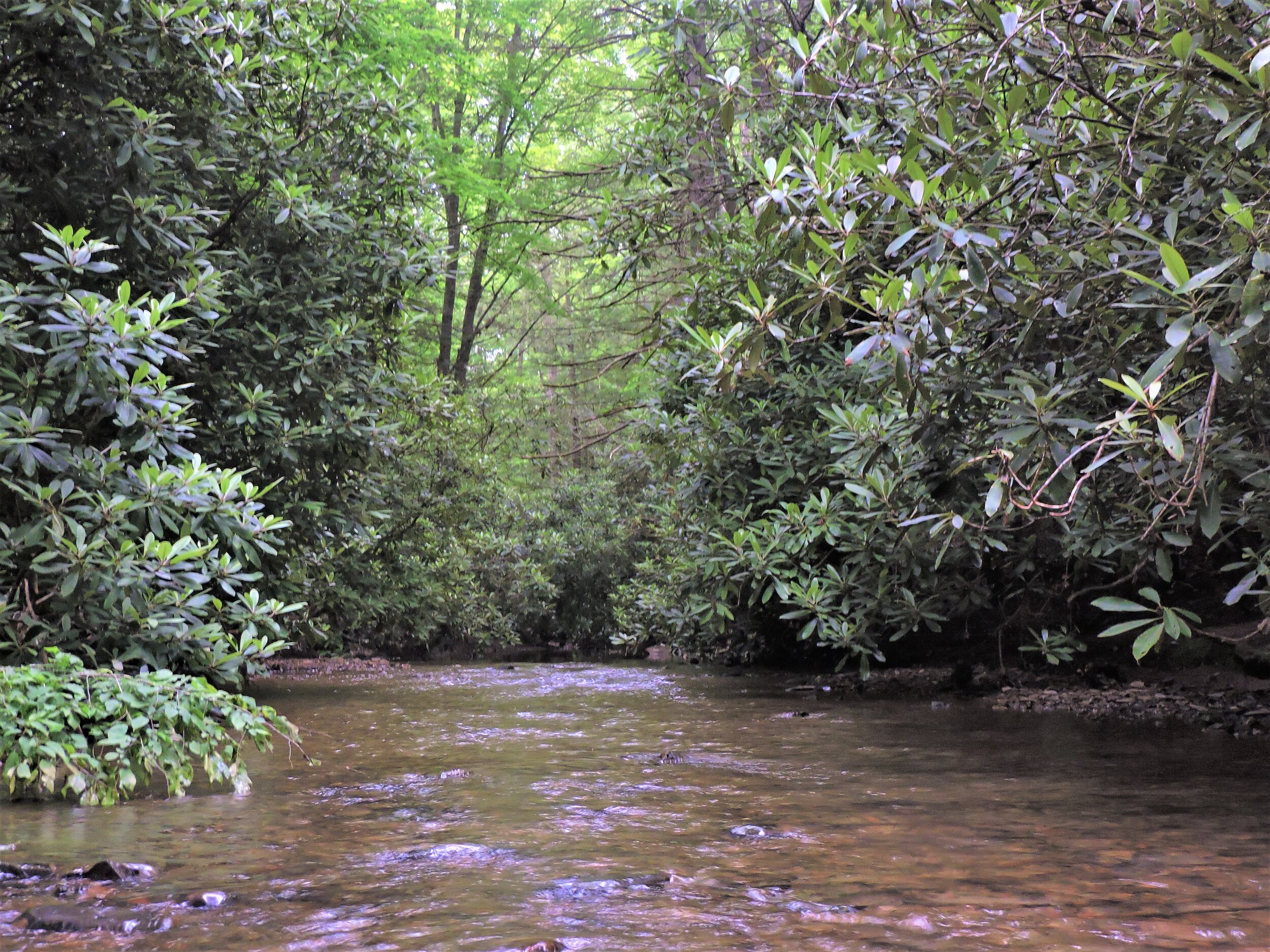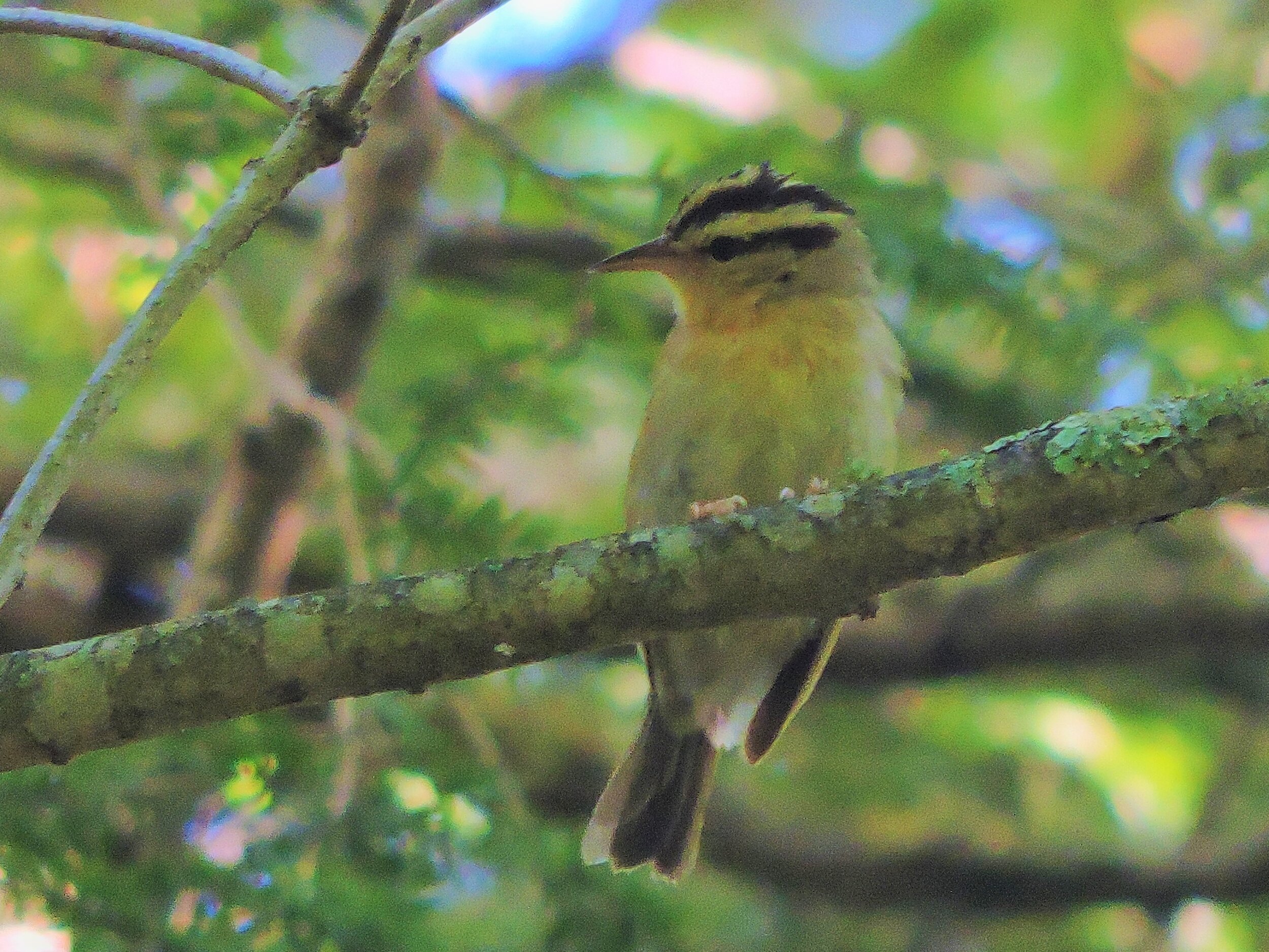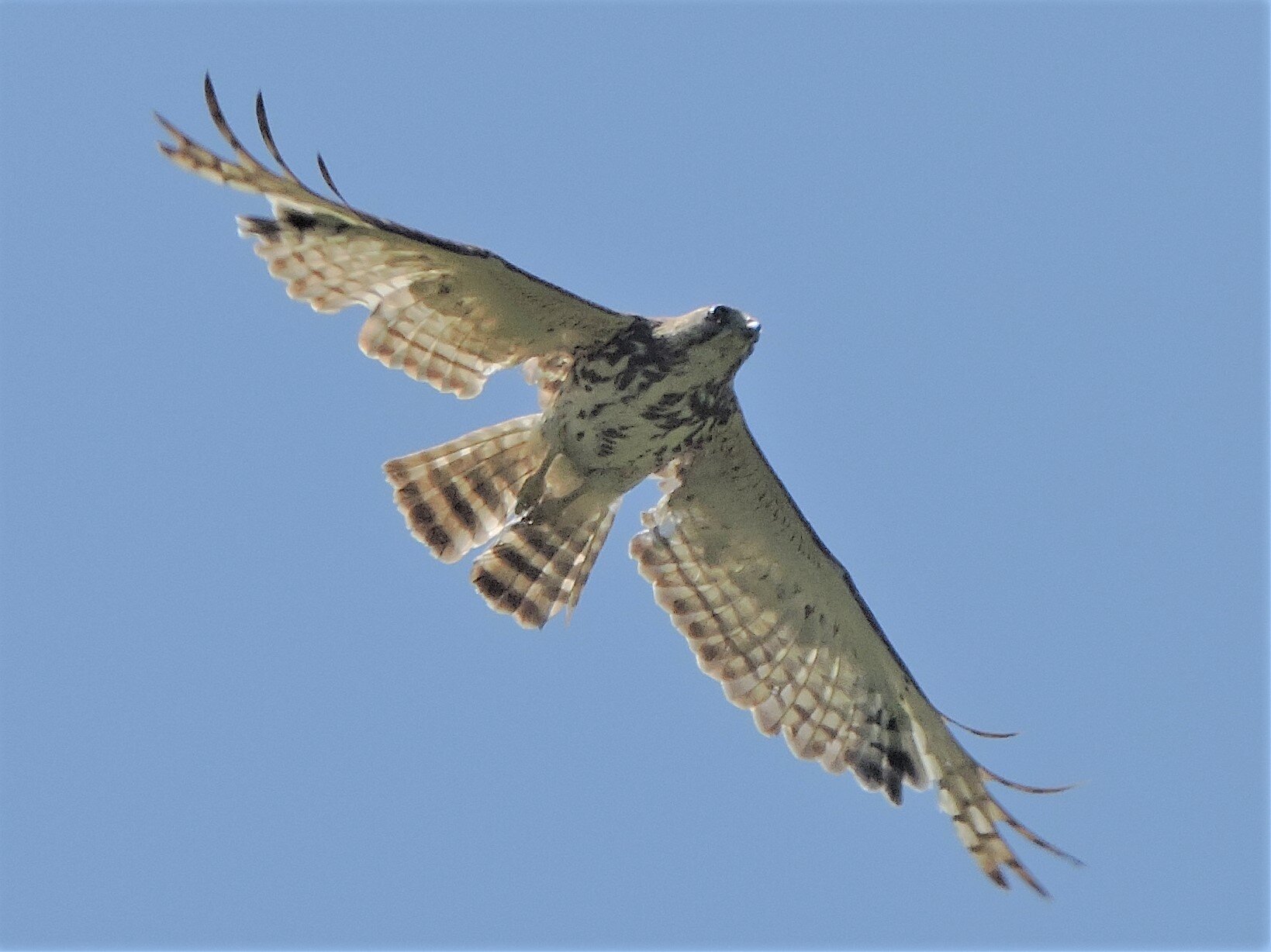Crawfish Hollow is a great place for summer birding, and is almost like a “gateway” into the Blue Ridge of Southwest Virginia. Hosting a variety of great habitats, Crawfish Hollow follows Bear Creek to end at the Crawfish Trailhead in the Jefferson National Forest. This is a long, winding footpath that follows Bear Creek into the spectacular and mysterious mountains between Atkins and Nebo. Only a few minutes north of I-81, it’s a great “pitstop” for birding between Blacksburg and Bristol; particularly during the summer doldrums as many other bird populations quiet down elsewhere in the state.
Keep a lookout for Wood Ducks and egrets stealthily foraging in sunny wetlands on Crawfish and Dave Path roads before reaching the trailhead, or maybe even the flight display of a vagabond Bobolink straying from the rolling pastures of Atkins farther south. Along Bear Creek, a breeding population of Red-shouldered Hawks may be heard screeching overhead or glimpsed as they soar over the misty meadows at daybreak. Farther into the woods, hillside canopies of oak, birch and hemlock host a chorus of montane and southern warblers such as Hooded, Black-throated Green and Worm-eating Warbler, etc., as well as all indigenous vireos (Blue-headed, Yellow-throated, etc.). Least, Acadian and Great-crested Flycatchers may be heard singing in dense foliage, often fluttering out into the open as they squabble with each other. Ruffed Grouse also call the surrounding forest home, and are typically spotted or heard only briefly whenever they are flushed from clearings along the trail. Most of these species can be observed at close range with binoculars, and many more may be heard singing deeper into the riparian corridor.
Other unusual residents include the Southern Appalachian subspecies of the Brown Creeper (Certhia americana nigrescens), which can be found in the area year-round. Their high-pitched, liquid song is as beautiful as it is inconspicuous when it echoes down from their vertical perches on the upper limbs of the lush canopy. Red-breasted Nuthatches also reside in the dense hemlock forests farther along the trail in the summer, and Bank Swallows feed with other local swallow species over the moist, sunny meadows along Crawfish/Dave Path Road. Migration can also be very exciting in this area, referred to locally as “Crawfish Holler.” Elusive species such as Cerulean and Bay-breasted Warblers appear here sporadically. On clear, summer nights, you can be awakened at dawn or lulled to sleep late at night by singing Eastern Whip-poor-wills tucked away in the brush at the forest’s edge.
However, there is not a lot of serious birding (or birding at all) that takes place here, so there is likely much more that can be found. Every time I visit, even during the heights of breeding season, it seems like there’s something new living there. Overall, it’s a great day stop (or “practice round”) on one’s way to higher mountains in the far south of the state or Tennessee. “Crawfish Holler” is definitely a great, secluded destination for some pretty intense summer birding.
Accessibility: This locality is open anytime for birding, hiking, mountain biking and horseback riding. There are no fees, and often very few people, if any at all, on or near the trail. To get there from the interstate, follow Lee Highway from Exit 50 to Bear Creek Road. In two miles, turn onto Crawfish Road. At the crossroads, go left onto the gravel Dave Path Forest Service Road. Follow this road to the end, and you will arrive at the trailhead. Before you reach the trailhead, you might also turn onto Newman Hollow Forest Service Road, which follows the ridgeline rather than the creek. There are many pull-offs on both Dave Path and Newman Hollow road where camping is permitted.
However, this also brings local weekend campers who may block the road or trail with horses, campers or suspicious activities, taking advantage of the secluded gravel roads. Cell phone service ends several hundred feet before the trailhead is reached, although a few bars may sporadically reappear farther down the road or along the trail. Additionally, black bear and timber rattlesnakes sometimes wander into this area, and care should be taken to respect these animals and to ensure they have no reason to harm you (i.e. store food in a safe location, check the ground wherever you step, do not harass, injure or kill them). The trail also crosses Bear Creek a few times, so appropriate footwear may be necessary to enjoyably walk the entirety of the trail.
Owner\Manager: U.S. Forest Service (Jefferson National Forest); private land along the road.
eBird Hotspot: Crawfish Hollow
—Cade Campbell



